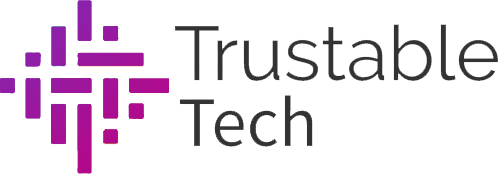The convergence of the Internet of Things (IoT) and blockchain technologies promises to deliver a range of advantages to businesses and individuals. From increased data accuracy to improved security and cost savings, the combination of these two disruptive technologies offers a wealth of opportunities.
However, there are still some challenges that need to be addressed before they can be fully implemented. In this article, we will explore the potential benefits and challenges of combining IoT and blockchain.
How does the combination of IoT and blockchain work?
The combination of IoT and blockchain works by connecting individual devices or objects to the blockchain network. This creates an immutable record of data exchange between connected devices. This data can then be used to automate processes, generate insights, and create new business models.
Accelerated Data Change
The combination of IoT and blockchain can enable faster data changes. This is due to the fact that data can be shared more quickly and securely without the need for manual checks and verifications. This could result in increased efficiency and cost savings for businesses, as well as improved customer service.
Lower Costs
The combination of IoT and blockchain can also reduce costs associated with data transfers. This is because the technology eliminates the need for manual labor and third-party intermediaries. This could result in significant cost savings for businesses.
Improved Security
The combination of IoT and blockchain can also improve security. This is because the technology provides a secure, immutable record of data transfers. This could help reduce the risk of data tampering and fraud.
Streamlines Accounting
The combination of IoT and blockchain can also streamline accounting processes. This is because the technology can automate the recording and tracking of financial transactions. This could result in improved accuracy, reduced costs, and improved efficiency.
A More Efficient Supply Chain
The combination of IoT and blockchain could also result in a more efficient supply chain. This is because the technology can track and verify data at every step of the supply chain. This could result in improved visibility and accuracy, as well as increased efficiency.
Challenges in IoT and Blockchain convergence
While the combination of IoT and blockchain can offer a range of benefits, there are still some challenges that need to be addressed. These include cost issues, scalability issues, privacy concerns, and the need for better standards and regulations.
Scalability Issues
Scalability is a major issue for both blockchain and IoT, but the issue is compounded when these two technologies are combined. Blockchain requires a large amount of computing power and storage, which might become overburdened if the number of users and devices connected to the network increases. Similarly, IoT devices might not be able to handle the data transmission and processing required for blockchain operations.
Privacy Issues
The ability of blockchain technology to be accessible to a wide variety of users and organizations means that users must be careful to protect their data from potential misuse. Furthermore, smart devices can be vulnerable to hacking and data theft, which can compromise user privacy. Finally, the lack of regulations and standards for the use of blockchain technology in IoT can create confusion and uncertainty among users, making it difficult for them to understand how their data is being used and protected.
Cost Issues
Another challenge that needs to be addressed is the cost associated with implementing IoT and blockchain technology. Both require a great deal of infrastructure and setup, which can be expensive and difficult to maintain. Additionally, the cost of processing transactions on the blockchain can be high, making it difficult to scale the technology without increasing costs. Furthermore, data stored on the blockchain is immutable, so changes or modifications to it can be difficult and costly.
Standards and Regulations
Finally, there is a lack of standardization and interoperability between different blockchain protocols and IoT devices, making it difficult for the two technologies to work together effectively. The lack of a unified regulatory framework for blockchain and IoT technologies can also create an obstacle to the efficient integration of the two technologies.
The combination of IoT and blockchain technologies promises to revolutionize how data is shared, processed, and stored. This could result in increased efficiency, cost savings, and improved security. However, there are still some challenges that need to be addressed before the technology can be fully implemented.

